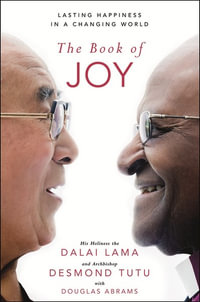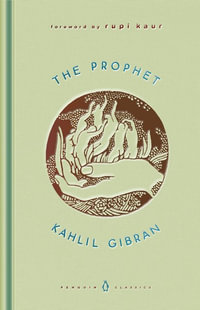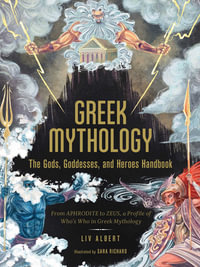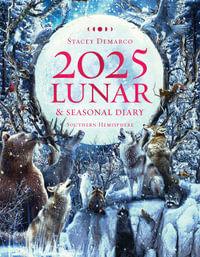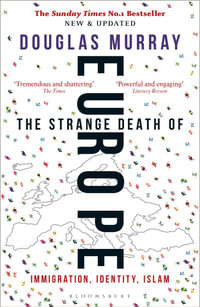| Acknowledgments | p. xiii |
| General Introduction Bibliography | p. xv |
| Up to the Eve of the Second Vatican Council | |
| The Roman Empire | p. 3 |
| Consent Makes Marriage | |
| The Church's Use of the Roman Understanding that Consent Makes Marriage | p. 11 |
| Saint Augustine | p. 19 |
| The Centrality of Love | |
| The Indissolubility of Marriage in the Christian Roman Empire | p. 27 |
| The Ancient Germanic Tradition | p. 33 |
| Consent Makes Marriage but Needs Proof | |
| Archbishop Hincmar of Rheims | p. 43 |
| His Unsupported Emphasis on Consummation | |
| Twelfth-Century France | p. 55 |
| Marriage is Centered on Love and Created by Consent | |
| Three Thinkers Who Promoted the Role of Consent | p. 55 |
| Ivo of Chartres–Restricting Divorce and Remarriage While Supporting Love and Consent | p. 56 |
| Hugh of Saint Vitor–Consent and Consummation are Important, but Only Consent is Necessary | p. 64 |
| Peter Lombard–The Pinnacle of the Consensual View of Marriage | p. 75 |
| The Combined Challenge to the Legacy of Hincmar of Rheims | p. 80 |
| Gratian | p. 81 |
| Gratian and His Decretum | p. 81 |
| Gratian Introduces Consummation into the Consensual View of Marriage | p. 84 |
| Consequences of Gratian's Theory–Pertaining to Spouses Entering Religious Life, Clandestine Marriages, and Impotence | p. 94 |
| Gratian and Marriages between Unbaptized Spouses (the Pauline Privilege) | p. 99 |
| The Revolution Caused by Gratian | p. 103 |
| Gratian Influences the Universities and the Church | p. 105 |
| Collections of Law after Gratian | p. 105 |
| Gratian's Influence on the Church through Pope Alexander III | p. 107 |
| Huguccio—An Authoritative Gratian Scholar | p. 119 |
| Pope Innocent III–Uniformity of Church Practice Based on Gratian | p. 124 |
| Gratian's Legacy | p. 128 |
| The Sixteenth Century—A Time of New Challenges for the Church | p. 131 |
| The Council of Trent and Marriage | p. 131 |
| The Council of Trent and How Consent is to be Exchanged | p. 137 |
| Sixteenth-Century Extensions to Gratian's Pauline Privilege | p. 147 |
| The End of the Sixteenth Century | p. 156 |
| The 1917 Code of Canon Law—The Need for One Comprehensive Book of Laws | p. 159 |
| The 1917 Code's Purpose and Layout | p. 159 |
| The Nature of Marriage According to the 1917 Code | p. 162 |
| Marriage Preparation and Impediments, Especially Impotence | p. 168 |
| Matrimonial Consent | p. 174 |
| The Prescribed Form of Marriage | p. 182 |
| The Effects of Marriage | p. 183 |
| The Dissolution of Marriage | p. 185 |
| Convalidations and Second Marriages | p. 190 |
| Consequences of the 1917 Code— Greater Emphasis on the Sexual Dimension at the Expense of Love | p. 191 |
| Between the 1917 Code and the Second Vatican Council—A Period of Dispute | p. 199 |
| Pope Pius XI and How Love Must Pervade Marriage | p. 199 |
| Heribert Doms and His Emphasis on Love | p. 205 |
| The Official Condemnation of Doms's Emphasis | p. 210 |
| Conclusion to Part One | p. 215 |
| The Second Vatican Council and Current Marriage Law | |
| Introduction to Part Two | p. 221 |
| The Second Vatican Council and Marriage | p. 227 |
| Attempts to Draft a Document on Marriage | p. 227 |
| ‘Sacrosanctum Concilium’ | p. 236 |
| Lumen Gentium | p. 239 |
| Orientalium Ecclesiarum and ‘Unitatis Redintegratio’ | p. 242 |
| Christus Dominus | p. 245 |
| Gravissimum Educationis | p. 247 |
| Apostolicam Actuositatem | p. 249 |
| A Brief History of the Drafting of ‘Gaudium et Spes’ | p. 251 |
| Marriage in Gaudium et Spes | p. 268 |
| A Summary of the Second Vatican Council and Marriage | p. 281 |
| Description of the 1983 Code of Canon Law | p. 285 |
| The Drafting of the Code | p. 285 |
| Those Bound by the Code | p. 288 |
| The Structure of the Code | p. 290 |
| The Nature of Marriage | p. 295 |
| Consent Brings a Marriage into Existence | p. 307 |
| Non-Consummated Marriages, Consummated Marriages, and the Act of Consummation | p. 311 |
| The Dissolution of Non-Consummated Marriages | p. 321 |
| Pastoral Care and Marriage Preparation | p. 331 |
| The Impediment of Impotence | p. 335 |
| The Present Law on Impotence | p. 335 |
| Possible Developments of the Law on Impotence | p. 349 |
| Requirements for Matrimonial Consent: Mental Faculty, Knowledge, and Genuineness | p. 357 |
| The Mental Faculty Required for Valid Consent | p. 359 |
| The Present Law Concerning the Required Mental Faculty | p. 359 |
| Comparisons Made between Psychological Incapacity and Impotence | p. 364 |
| Applying the Present Law Concerning the Mental Faculty to Consummation | p. 370 |
| The Knowledge Required for Valid Consent | p. 377 |
| The Required Genuineness of Consent | p. 385 |
| The Exclusion of Marriage or an Essential Element or Essential Property | p. 385 |
| Marriage Celebrated Subject to a Condition | p. 398 |
| Marriage Entered Because of Force or Grave Fear | p. 402 |
| The Prescribed Ceremony by Which Consent is Given | p. 405 |
| The Form of Marriage | p. 405 |
| Mixed Marriages and Marriages Celebrated Secretly | p. 409 |
| The Effects of Marriage | p. 413 |
| The Dissolution of Non-Sacramental Marriages | p. 417 |
| Introduction | p. 417 |
| The Pauline Privilege | p. 419 |
| Extensions to the Pauline Privilege | p. 423 |
| Dissolution in Favor of the Faith | p. 426 |
| The Validation of Marriage | p. 431 |
| General Conclusion | p. 433 |
| The Primary Sources and Historical Development | p. 433 |
| An Evaluation of the Present Law of Marriage | p. 439 |
| Vatican II and Marriage Law–Not a Revolution | p. 440 |
| The Present Law's Faithfulness to Vatican II | p. 441 |
| Differences between the Present Law and Vatican II | p. 446 |
| Possible Developments of the Present Law of Marriage | p. 451 |
| Finally | p. 454 |
| Bibliography | p. 455 |
| Index | p. 491 |
| Table of Contents provided by Ingram. All Rights Reserved. |








